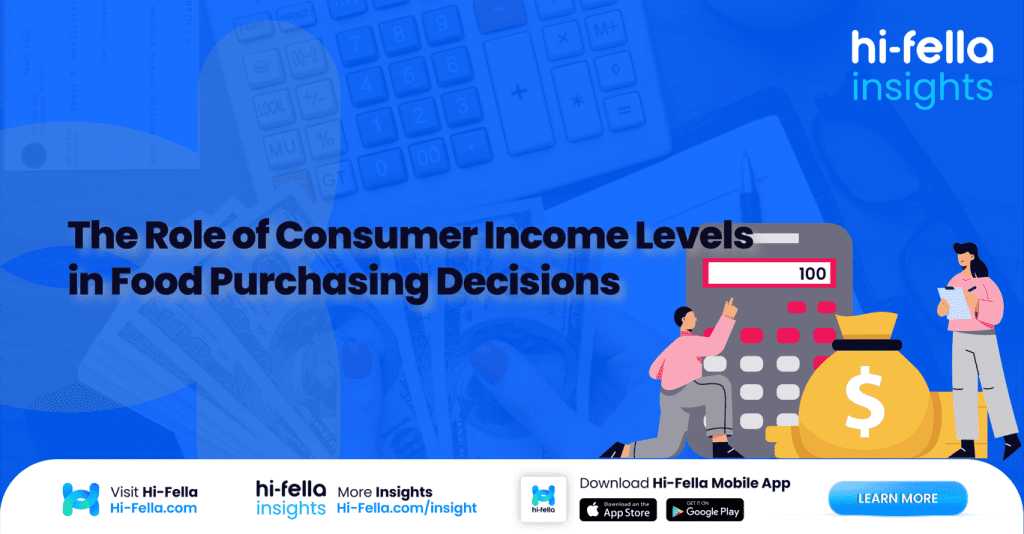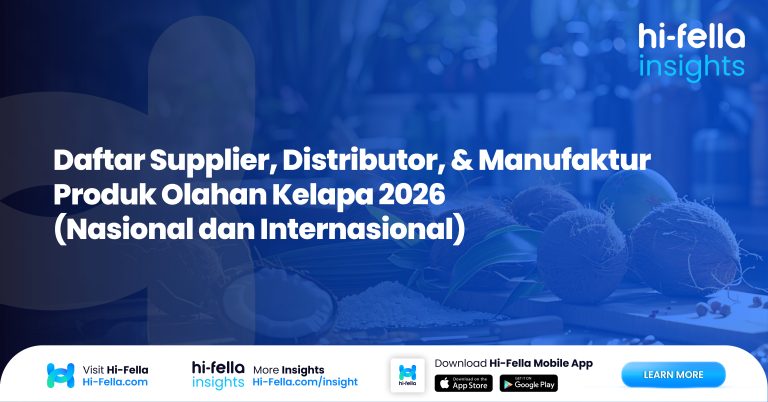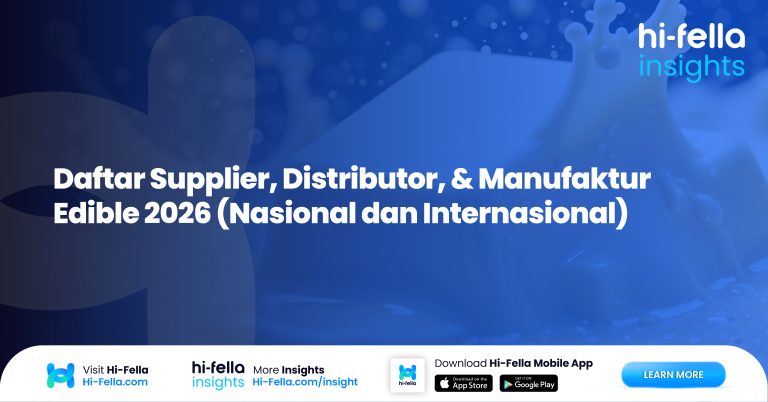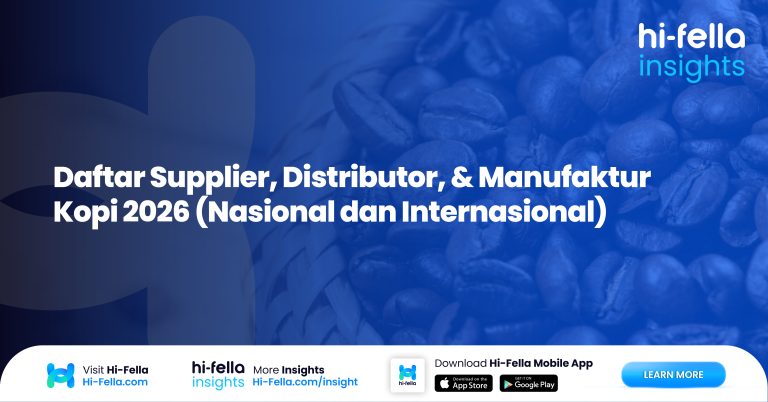Food is essential, but how we choose what to eat is anything but simple. While culture, taste, and marketing all play a part, one of the most powerful drivers of food purchasing behaviour is income level. It influences not just what we buy, but how much, how often, and from where.
Whether you’re selling organic baby food in Singapore or instant noodles in Kenya, understanding the economic profile of your consumer base is critical. Let’s explore how income levels shape food decisions and what it means for producers, retailers, and exporters aiming to grow intelligently across diverse markets.
Income Elasticity of Demand: The Core Concept
One of the most useful economic tools in understanding food purchasing behaviour is income elasticity of demand—a measure of how much the demand for a product changes when a consumer’s income changes. In simpler terms, it helps businesses predict which products will rise or fall in popularity as people get richer or poorer.
When demand is said to be income inelastic, it means that changes in income don’t significantly affect how much consumers buy. This is often the case with staple food products like rice, cooking oil, eggs, or instant noodles—basic necessities that people continue purchasing in nearly the same quantity, even if their income fluctuates. A low-income family will continue buying cooking oil whether their household income increases slightly or decreases—because it’s essential to daily meals.
On the flip side, income elastic products see a strong correlation between rising income and rising demand. These are often non-essential, value-added, or aspirational items. Think cold-pressed juices, imported cheeses, organic baby food, or plant-based protein powders. As consumers move up the income ladder, they don’t just eat more—they eat differently. They upgrade their choices based on quality, brand, origin, or perceived health benefits.
Let’s break this down with a few concrete examples:
- Rice is generally income inelastic. A family earning $500 a month might buy 20 kg of rice. If their income increases to $700, they may still consume around 20 kg—but they might now opt for a branded, organic version or one with special fortification. The volume doesn’t change, but the value per unit rises.
- Protein choices often show moderate to high elasticity. A household might start with tinned sardines or frozen nuggets, but as income rises, shift toward fresh fish, lean meat, or plant-based protein—products perceived to be healthier or higher status.
- In the snack and convenience category, low-income consumers may buy budget-friendly crackers or instant noodles. Higher-income consumers, however, often seek premium, functional, or convenience-enhanced formats—like gluten-free granola bars, collagen drinks, or gourmet ready-to-eat meals.
Why does this matter for food businesses? Because positioning your product on the income elasticity spectrum tells you exactly where you’re likely to succeed—or struggle—across different income segments.
If your product is highly elastic, it makes sense to target emerging middle-class consumers who are actively upgrading their diets. These are high-growth zones for premium offerings. But if your product is inelastic and priced tightly, you might focus on volume strategy and price sensitivity instead—where scale matters more than brand storytelling.
Understanding income elasticity also helps when entering new markets. A product that performs well in affluent neighbourhoods might flop in rural or low-income areas—not because it’s bad, but because it’s mismatched with income-driven demand behaviour. In these cases, businesses often introduce tiered versions of their product to match various income levels—basic, standard, and premium—without compromising brand value.
In essence, income elasticity of demand isn’t just a textbook concept—it’s a practical lens for pricing, product development, market segmentation, and promotional strategy. And when paired with smart platforms like hi-fella, which help suppliers connect with markets aligned to their value proposition, it becomes a scalable growth tool in the real world of food trade and global expansion.
Budget-Constrained Decisions vs. Lifestyle-Driven Choices
In low-income segments, food decisions are mostly driven by necessity and affordability. Here, value-for-money is king. Brands that succeed in these markets often emphasise quantity, shelf stability, and price transparency. Small pack sizes, refillable formats, and budget bundles work well. Brand loyalty is relatively fluid—consumers may switch to cheaper alternatives when prices rise or income dips.
As you move into middle-income and upper-income brackets, food becomes more than fuel. Consumers begin to buy based on convenience, wellness, ethical sourcing, or brand identity. They are more open to trying new formats—plant-based, gluten-free, fortified, locally sourced, or gourmet.
This shift from survival-based to lifestyle-driven consumption is a key turning point for food businesses. If your brand only focuses on price, you may struggle to retain higher-income customers who seek experiences, not just calories.
The Premiumisation Effect: Trading Up with Income
Premiumisation is what happens when rising income encourages consumers to trade up. This trend is visible across emerging markets like Southeast Asia, Latin America, and parts of Africa, where growing middle classes are transforming traditional food patterns.
Take urban Vietnam as an example. A decade ago, the typical snack market revolved around low-cost biscuits and wafers. Today, consumers are reaching for imported granola bars, collagen-infused drinks, and functional snacks. The higher income has created space for category expansion and product storytelling, with price no longer being the only barrier.
For exporters and global brands, this is a huge opportunity—but it’s also a challenge. Premium products must still be culturally relevant and economically justifiable. Just because someone can afford your product doesn’t mean they’ll buy it—unless they see the value clearly.
Income and Risk Aversion in Food Purchasing
Lower-income consumers are typically more risk-averse in their food purchases. A new brand or unfamiliar ingredient is less likely to be accepted unless it’s endorsed by trusted peers or aggressively sampled at point of sale. Why? Because trial-and-error is costly when every ringgit, peso, or shilling counts.
This is why mass-market food brands often lean heavily on familiarity, brand heritage, or local relevance. Trust is currency. In contrast, higher-income consumers are more willing to experiment. They’ll try a plant-based milk or cricket protein bar—not because it’s proven, but because it’s new. Here, novelty and innovation drive engagement.
Understanding these psychological triggers linked to income allows brands to tailor marketing, packaging, and pricing to reduce purchase friction and build loyalty across tiers.
Where You Sell Matters Just As Much
Income doesn’t just influence what consumers buy—it influences where they buy it. Lower-income households are more likely to shop in wet markets, traditional retail outlets, or bulk-buying cooperatives. Their access to modern trade and e-commerce may be limited by infrastructure or digital inclusion.
In contrast, higher-income consumers increasingly prefer convenience-focused channels: supermarkets, speciality food stores, organic grocers, or food delivery apps. For exporters or brands trying to penetrate multiple segments, having channel-specific strategies is essential.
The same snack may need to be sold in three different formats—multi-pack value packs for traditional trade, sleek premium packaging for retail chains, and QR-code enabled sustainability storytelling for online buyers.
What Income Segmentation Means for Exporters
For exporters, income segmentation is a tool—not a challenge. Rather than building one-size-fits-all strategies, the most effective food exporters tailor their offering to targeted consumer profiles. This can mean:
- Creating tiered product lines (value, standard, premium)
- Adapting portion sizes to match buying power
- Offering co-branding opportunities with local players to build trust
- Adjusting labelling and marketing messages to suit income-driven priorities (price vs. benefit-led)
It also means understanding that income trends are dynamic. A middle-income neighbourhood today could become a premium growth zone in five years. Exporters who pay attention to income-driven market shifts are more likely to scale sustainably and retain long-term buyers.
Grow Smarter With Platforms That Get the Economics
If you’re a food supplier or brand aiming to expand into new territories, hi-fella is the ideal platform to connect you with the right markets—based not just on product compatibility, but on real-world economics.
hi-fella helps exporters navigate market complexity by connecting them with verified buyers, global exhibitions, and category-specific insights. Whether you’re pricing a shelf-stable staple or introducing a premium superfood, understanding income dynamics is essential—and hi-fella can help you turn that insight into strategy.
Because in food, price isn’t just a number—it’s a signal. And when you learn to read those signals through the lens of income, you’re one step closer to building a brand that resonates across borders. Trade smart, scale wisely—with hi-fella.








